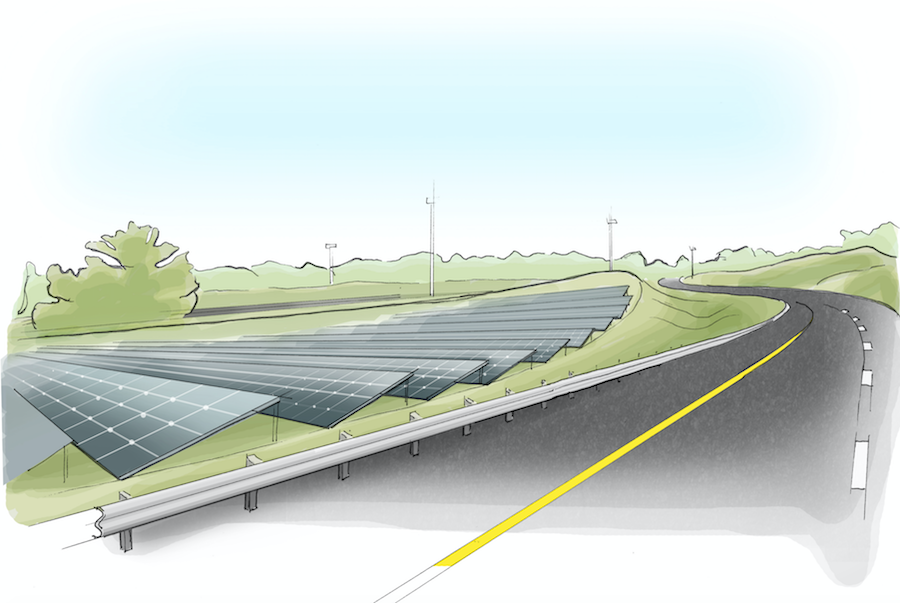The Ray Highway, an 18-mile stretch of the I-85 in Georgia, is furthering a transportation revolution.
A configuration of 2,600 high efficiency solar panels at Exit 14 are maximizing the potential of right-of-way land with a megawatt of renewable energy.
“Right-of-way” (ROW) areas are roadside lands owned by state departments of transportation (DOTs). They stretch for miles as otherwise unused acreage, making them ideal locations for renewable energy development. Already cleared, currently idle, and easy to access, these areas present a built-in solution for addressing a growing demand for energy infrastructure.
The Georgia ROW solar project is the result of a collaboration between Georgia Power and The Ray, a non-profit living lab and proving ground. Founder and president Harriet Langford named the organization in honor of her father, industrialist and environmentalist Ray C. Anderson. Ray was a trailblazer who had the same goal as the organization — transforming the future of global transportation infrastructure. To further this goal, The Ray is working towards a future of highway transportation with zero deaths, zero waste, and zero carbon.
“As our transportation systems become smarter and electrified, we will need more energy available, closer to the interstate and interstate exits, and more funding to support the infrastructure demands,” Harriet explains. “By enabling renewable energy generation using the idle roadsides, our DOTs can help to fill this gap.”
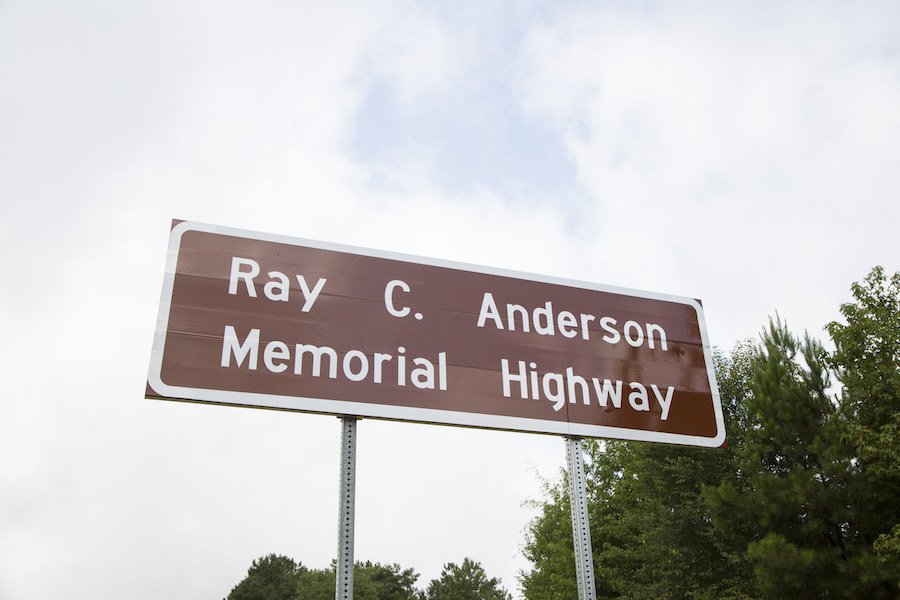
Built-In Benefits
The majority of the 48 contiguous U.S. states have more than 200 miles of empty roadside land that could accommodate solar energy development. Altogether this amounts to 127,500 acres across the nation. Such acreage has the potential to generate up to 36 tera-watt hours (TWh) of electricity, and consequently produce 1% of the entire country’s energy demand.
These solar ROWs would not only be an easy way to generate clean electricity, but a huge economic incentive. ROW solar is a $4 billion economic opportunity for State DOTs, which would additionally benefit from reduced energy and roadside maintenance costs, and the creation of new revenue streams. Depending on the state and amount of suitable roadside land, there’s the opportunity for states themselves to generate a value up to $180 million of carbon-free electricity each year.
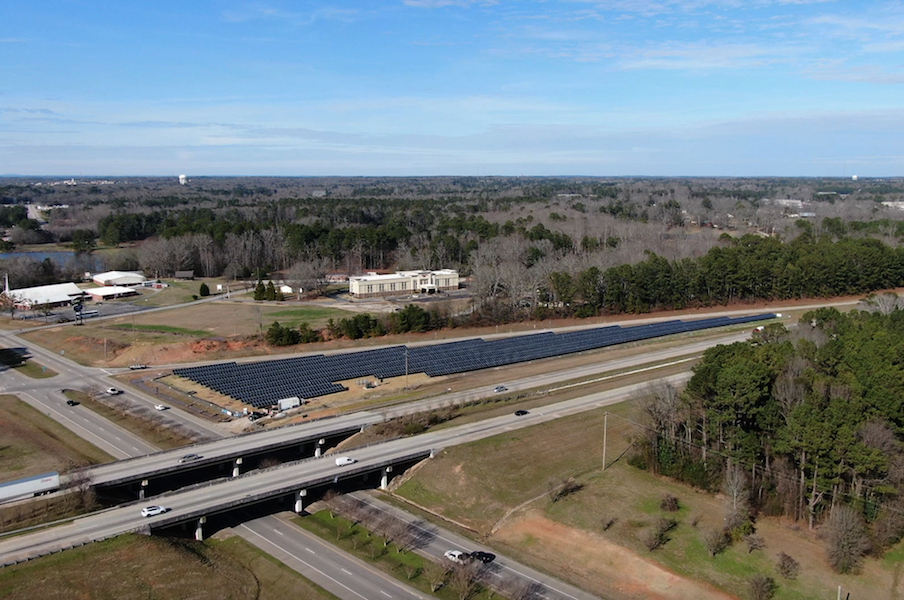
“No matter how they decide to structure the deal,” says Laura Rogers, Director of Strategic Partnerships at The Ray, “State DOTs win on all fronts by optimizing underutilized land to generate clean renewable energy that benefits their communities, the environment, and their budgets.”
Solar Mapping
That’s why The Ray partnered with the Webber Energy Group at the University of Texas, Austin to create ground-breaking mapping research to bring right-of-way solar to the next level. The Webber Energy Group analyzed the unpaved roadside areas at exits across the U.S. interstate system for their solar energy generation potential. The result is an interactive web-based mapping tool that will help State DOTs and other interested parties assess the potential for interstate solar across the contiguous United States.
“We have found that when stakeholders have unbiased information available to them, they can make energy decisions with a lot more clarity and confidence,” says Michael Webber, Josey Centennial Professor in Energy Resources and Professor of Mechanical Engineering at UT. “That’s our goal with this study: to help people understand the potential for interstate solar so that policymakers, developers, and investors have a clearer view of the opportunity.”
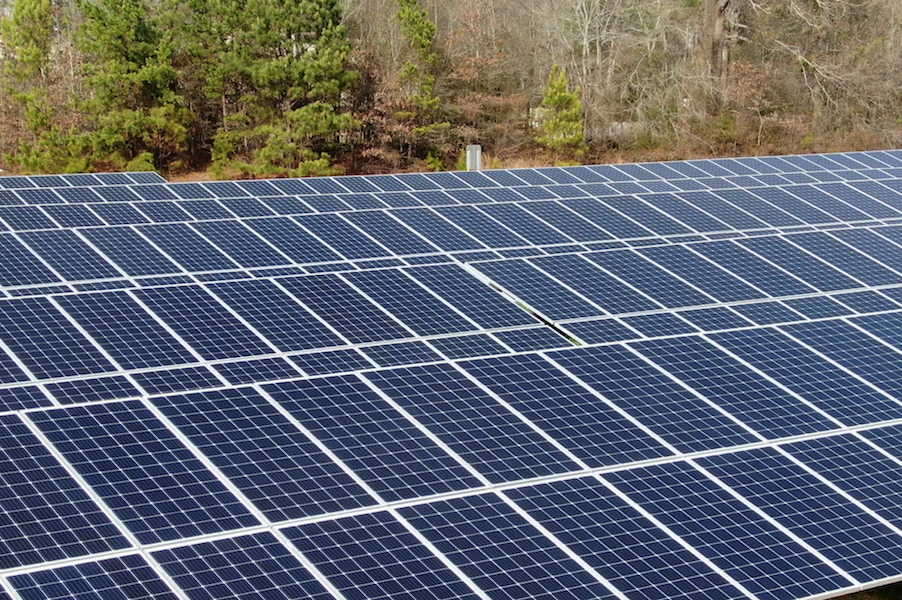
Pollinator-Friendly Projects
Georgia is the third state to make use of interstate property for renewable energy development, behind Oregon and Massachusetts’ “solar highway” projects. But The Ray’s right-of-way solar is the first to incorporate a holistic approach to the function of this roadside land, optimizing every inch for land regeneration and beautification.
Planted underneath and around each of The Ray’s ROW solar panels are native, pollinator-friendly wildflowers, a more aesthetic and stable ground cover alternative to typical turf grass. These native plants naturally prevent erosion on account of their deep root structures. They also cut back on maintenance and resources, as they are drought resistant and optimized for the local climate. Additionally, this pollinator meadow provides a home for bees and butterflies, which benefits local agriculture in the surrounding area, and is a much more appealing visual for those commuting along the highway.
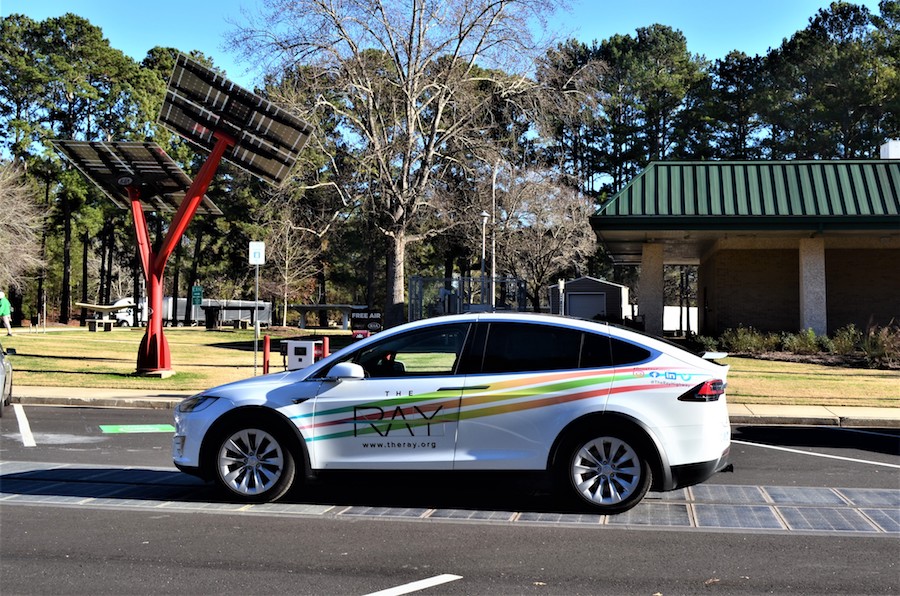
Further Innovations
The Ray’s solar innovation continues with further research to pursue solar development at highway rest stops and the possibility of solar highway sound barriers. The organization is also partnering with Colas and INES (the French National Institute for Solar Energy) to create solar-paved highways with the first U.S. installation of Wattway (a road pavement embedded with solar cells in a patented frame), which would allow roads themselves to generate clean energy. Each of these initiatives support The Ray’s ultimate mission: to pave the way to a safer and more prosperous future for all.

